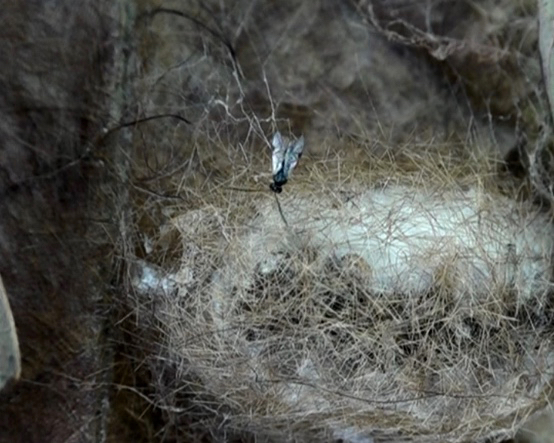
An earlier post showed numerous white maggots emerging from a brown tussock moth caterpillar. The maggots then spun white silk to cover themselves. Within five days small parasitic wasps emerged from the common cocoon. The above image shows a tussock moth that just moulted to the final instar.

In the current case, many white maggots emerged from a dead pupa of another brown tussock moth. The maggots remained around the pupa but within the protective covering of the moth cocoon. They then spun white silk to cover themselves (above).
About eight days later the first wasp emerged from the cocoon, followed by another a few hours later (below).

During a period of three days less than five wasps emerged from the dead pupa, to dig their way out, first from the silky common cocoon, then the the moth cocoon. Most of the other wasp maggots failed to complete their life cycles.
YC Wee
Singapore
22nd April 2016








